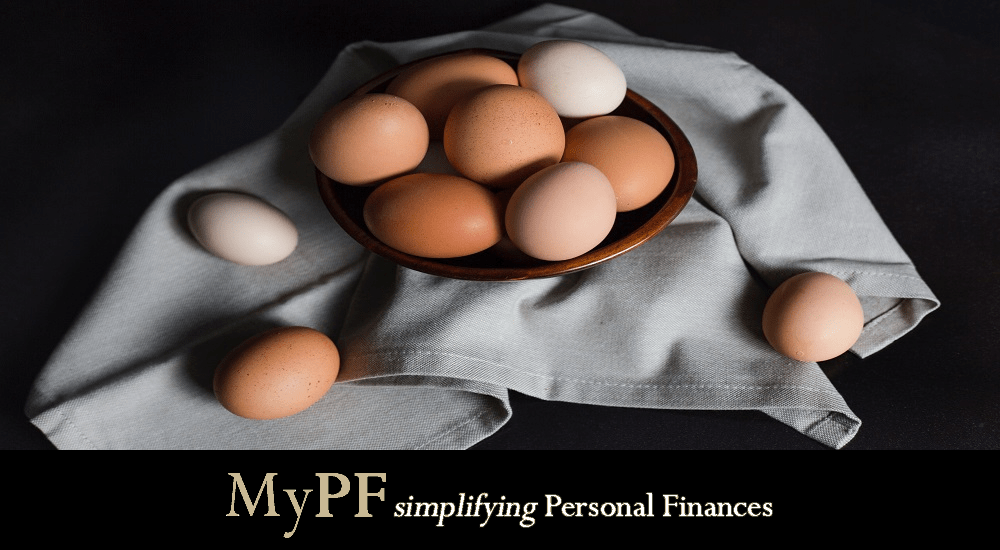“Don’t put all your eggs in one basket,” implies to avoid risking all of your money on a single investment. One such alternative basket to consider putting some eggs into is REITs, or Real Estate Investment Trust.
A diversified portfolio consists of several different investments that work together to reduce an investor’s overall risk profile. What’s more, personal finance in Malaysia is often practiced with the element of risk mitigation involved through diversification among other tactics. Diversification entails holding stocks from a variety of businesses, countries, and risk profiles, as well as bonds, commodities, and real estate. These numerous assets work together to lower the danger of a permanent loss of capital and the overall volatility of an investor’s portfolio. Diversifying one’s portfolio is essential for personal finance in countries with diverse investment opportunities like Malaysia.
Investing in real estate should be considered by investors who seek to increase the diversification of their portfolios. Real estate has historically increased total return while lowering overall volatility in portfolios. Investing in real estate investment trusts (REITs), which own income-producing commercial real estate, is a simple way to do this.
Contents
What are REITs?
REITs are real estate investment trusts that own, operate, or finance income-generating properties such as commercial properties. REITs, like mutual funds, pool resources from a large number of investors. This allows anyone to invest in real estate portfolios in the same way they do in other industries: by purchasing individual firm stock or a mutual fund or exchange-traded fund (ETF).
REITs must also disperse the majority of their cash flows to unitholders as dividends. As a result, REITs benefit investors through the possibility for capital appreciation as well as dividend distribution.
Furthermore, global REITs offer a varied investment portfolio in residential, office, data centers, warehousing, retail, and hotel.
Why Invest In Real Estate Investment Trusts (REITs)?
REITs have historically generated competitive total returns by paying out large, regular dividends and growing their assets over time. Because of their minimal connection with other assets, they are a good portfolio diversifier, lowering total portfolio risk while enhancing returns.
Because of the substantial dividend income they create, REITs are a key investment for both retirement savings and retirees who desire a steady income stream to cover their living expenses. Because REITs are obligated to transfer at least 90% of their taxable profits to their shareholders each year, their dividends are large.
Their payouts are backed up by a steady flow of contractual rents from their tenants. Due to the low connection of listed REIT stock returns with the returns of other stocks and fixed-income assets, REITs are also a good portfolio diversifier. REIT returns tend to “zig” while other investments “zag,” lowering overall volatility and improving returns for a given amount of risk in a portfolio.
Benefits Of Investing In REITs
Here are five benefits of taking a dip into REITs.
#1. Diversification
REITs own a diverse portfolio of properties with diverse tenant pools, reducing the risk of relying on a single property or tenant. For example, if you own a radio station and it closes down, its value will most likely decrease. When you invest in a pool of properties through REITs, the magnitude of such a single-property risk is reduced. This, in turn, fosters the widely held corporate practice of diversifying one’s asset portfolio.
#2. Affordability
REIT investors benefit from being a part of a larger pool of capital, allowing them to acquire stakes in far larger opportunities than they might with their own money. For example, an individual investor may not be able to afford a direct investment in a large asset such as a shopping mall or plaza. He or she can, however, invest in it in little parts through REITS.
#3. Liquidity
Liquidity — the ease of changing assets into cash – is another advantage of real estate investment trusts. Unlike stocks, real estate investment is simple to buy and sell. If the price of the REITs you bought in rises the next day, you may immediately log into your brokerage account and manage your position.
#4. High Yield
The growth in value of the real estate is reflected in REIT equities during periods of active economic activity. The ability of capital to compound in the form of dividends in the REITs structure has been a primary draw for most investors. REITs receive stable income through rents paid to commercial property owners, whose tenants usually sign long-term leases or interest charges from the financing of those assets.
The majority of REITs follow a simple and easy-to-understand business model: The corporation earns cash by leasing space and collecting rent on its real estate, which is then distributed to shareholders in the form of dividends. REITs, like other public corporations, must declare earnings per share based on net income as defined by generally accepted accounting principles when reporting financial results.
#5. Transparency & Flexibility
The entire procedure of buying and selling a REIT is transparent and adaptable. Investors in REITs can readily obtain information about REIT pricing and participate in trading throughout the day.
Conclusion
If you are interested in diversifying your portfolio into something that has the potential of mitigating some risk and generating decent returns, REITs have always been a timeless option for investors. Do your due diligence and evaluate your financial condition before making a move on this strategy. Consult with your financial planner to ensure that this option works for you.
Have you considering investing into REITs? Let us know in the comments down below.








Leave A Comment